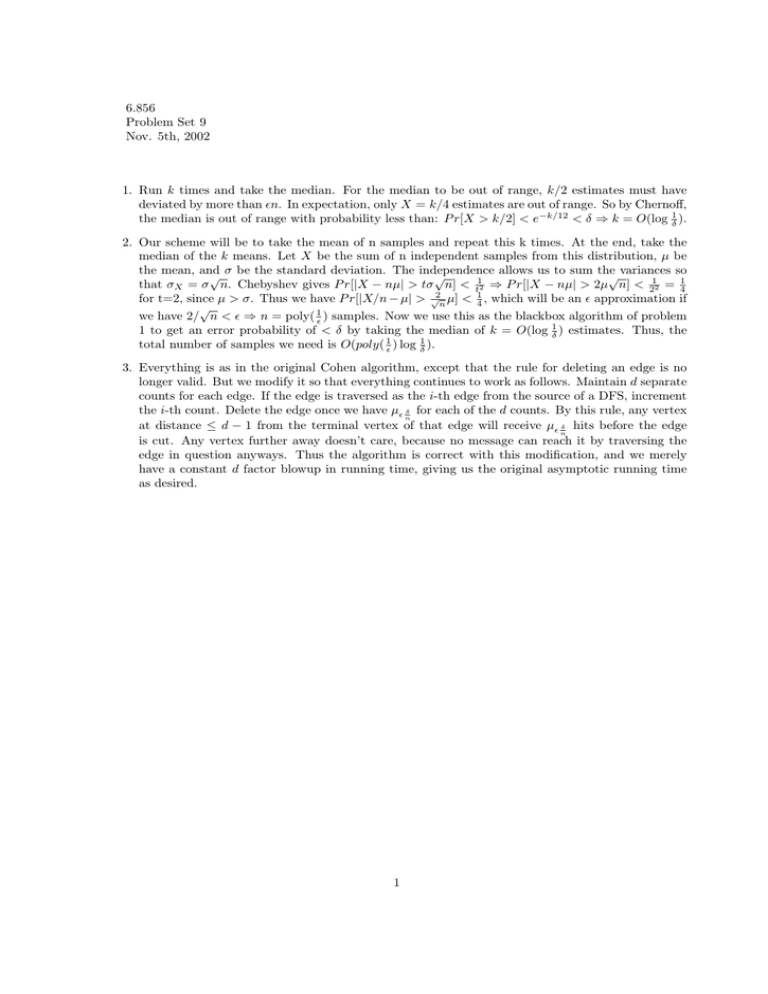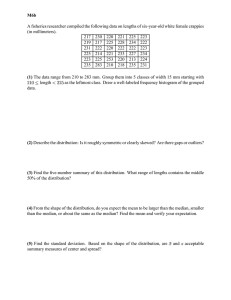Document 13546676
advertisement

6.856 Problem Set 9 Nov. 5th, 2002 1. Run k times and take the median. For the median to be out of range, k/2 estimates must have deviated by more than �n. In expectation, only X = k/4 estimates are out of range. So by Chernoff, the median is out of range with probability less than: P r[X > k/2] < e−k/12 < δ ⇒ k = O(log 1δ ). 2. Our scheme will be to take the mean of n samples and repeat this k times. At the end, take the median of the k means. Let X be the sum of n independent samples from this distribution, µ be the mean, and allows us to sum the √ √ σ be the standard deviation. The independence √ variances so that σX = σ n. Chebyshev gives P r[|X − nµ| > tσ n] < t12 ⇒ P r[|X − nµ| > 2µ n] < 212 = 14 for t=2, since µ > σ. Thus we have P r[|X/n − µ| > √2n µ] < 14 , which will be an � approximation if √ we have 2/ n < � ⇒ n = poly( 1� ) samples. Now we use this as the blackbox algorithm of problem 1 to get an error probability of < δ by taking the median of k = O(log 1δ ) estimates. Thus, the total number of samples we need is O(poly( 1� ) log 1δ ). 3. Everything is as in the original Cohen algorithm, except that the rule for deleting an edge is no longer valid. But we modify it so that everything continues to work as follows. Maintain d separate counts for each edge. If the edge is traversed as the i­th edge from the source of a DFS, increment the i­th count. Delete the edge once we have µ� δ for each of the d counts. By this rule, any vertex n at distance ≤ d − 1 from the terminal vertex of that edge will receive µ� δ hits before the edge n is cut. Any vertex further away doesn’t care, because no message can reach it by traversing the edge in question anyways. Thus the algorithm is correct with this modification, and we merely have a constant d factor blowup in running time, giving us the original asymptotic running time as desired. 1





